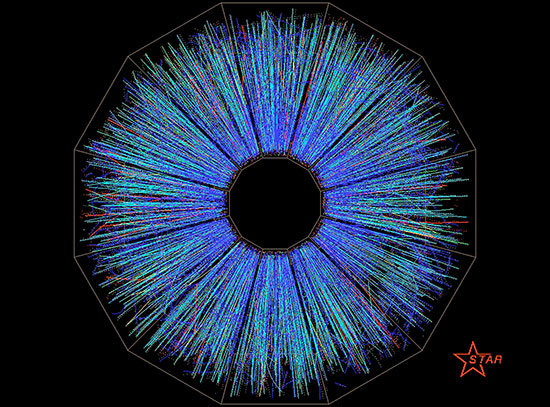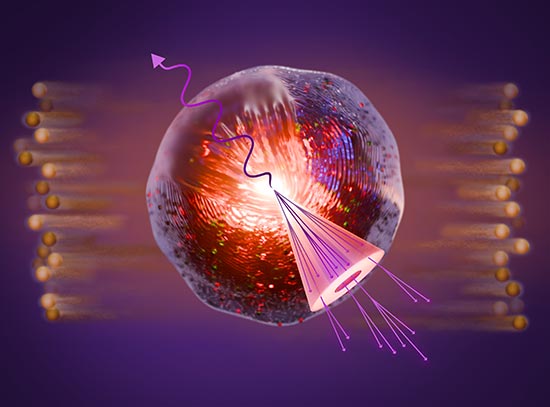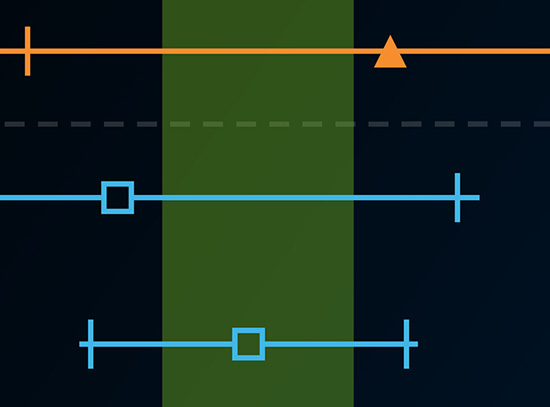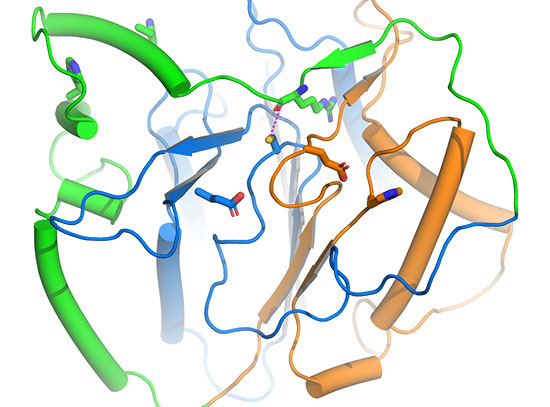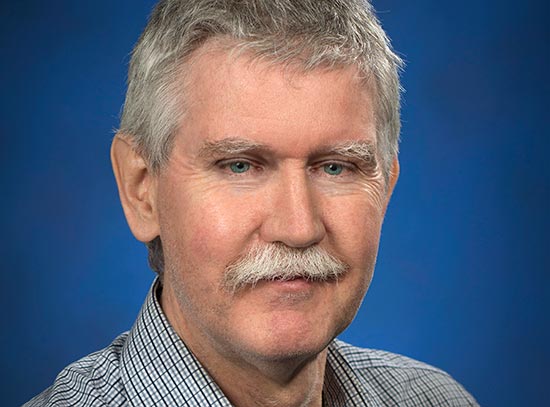PubSci Talks LuSEE-Night: Listening to the Universe from the Far Side of the Moon
Science café and conversation series brings together community members curious about radio telescope experiment
June 5, 2025
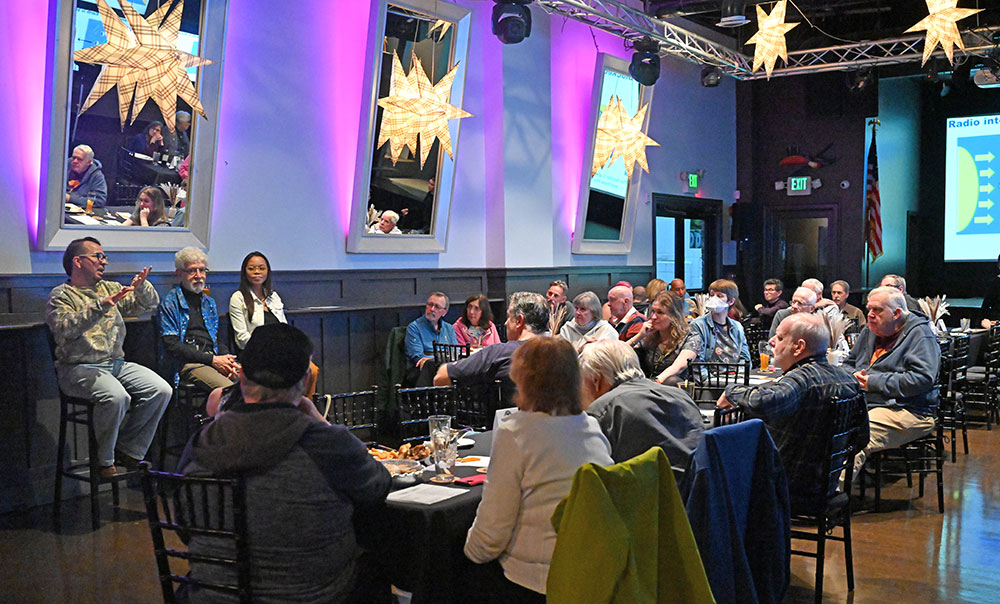 enlarge
enlarge
The PubSci crowd gathered at Napper Tandy's in Smithtown, New York. (Kevin Coughlin/Brookhaven National Laboratory)
At the latest installment of PubSci, a science café and conversation series offered by the U.S. Department of Energy’s (DOE) Brookhaven National Laboratory, local community members and Brookhaven Lab experts launched into a casual chat about a radio telescope that will land on the far side of the moon. The event, titled “Listening to the Universe from the Far Side of the Moon,” took place on May 7, 2025, at Napper Tandy’s in Smithtown, New York.
The discussion highlighted the Lunar Surface Electromagnetics Experiment-Night (LuSEE-Night), a collaborative effort between NASA and DOE and a step towards exploring the Dark Ages of the universe. The Dark Ages are a period starting about 380,000 years after the Big Bang, before the first stars and galaxies formed and about which little is known.
UC Berkeley’s Space Science Laboratory, funded by NASA, is leading the LuSEE-Night collaboration. Three panelists from Brookhaven Lab, which led DOE’s role in LuSEE-Night with key technical contributions from DOE’s Lawrence Berkeley National Lab, took on questions from a curious audience throughout the discussion. Overall, the experts from across Brookhaven Lab’s disciplines in physics and instrumentation aimed to answer three guiding questions:
- Why are we sending a radio telescope to the moon?
- What can we hear in the universe but not see?
- Can equipment survive extreme conditions in space?
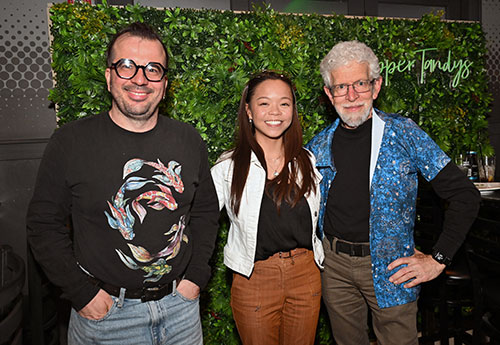 enlarge
enlarge
PubSci panelists Anže Slosar, left, Connie-Rose Deane, and Paul O'Connor. (Kevin Coughlin/Brookhaven National Laboratory)
“If we could measure the Dark Ages, it would tell us a lot about what the universe is made of and about the interesting things going on at the beginning of the universe,” LuSEE-Night science collaboration spokesperson Anže Slosar and Brookhaven Lab physicist said as the evening kicked off.
It will take very sophisticated and highly sensitive instruments to detect what’s known as the Dark Ages signal for the first time, Slosar noted. At the heart of the radio telescope is a complex spectrometer built at Brookhaven Lab that will listen for radio waves lingering from the Dark Ages.
But why place these radio instruments on the far side of the moon rather than on Earth?
It’s quieter! The lunar far side of the moon is shielded from radio interference. On Earth, there’d be much more noise to tune out.
“To be able to hear those faint, faint signals from the early universe [from Earth], it would be like trying to listen to a conversation in whispers with a freight train going by,” said LuSEE-Night Project Instrument Scientist Paul O’Connor, a senior scientist at Brookhaven.
PubSci guests wondered, “What are the most challenging parts of the project?” “How will LuSEE-Night be powered?” “Did the design process throw any curveballs?”
While the far side of the moon offers much needed radio silence, its extreme environment presents an example of one significant challenge LuSEE-Night will face: temperature.
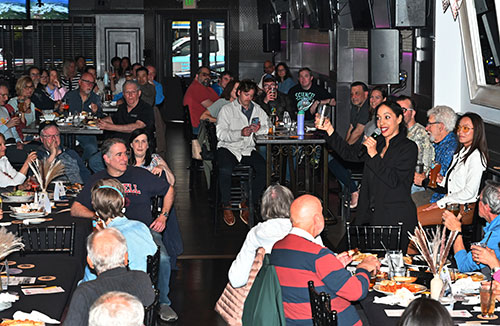 enlarge
enlarge
PubSci moderator Kahille Dorsinvil of Brookhaven Lab's Stakeholder Relations Office kicked off the night with a toast to science. (Kevin Coughlin/Brookhaven National Laboratory).
LuSEE-Night is an opportunity to test whether equipment built to meet strict design requirements can survive the moon’s dramatic temperature swings between its night and day, both of which last 14 Earth days. Its nighttime temperatures can fall as low as -280 degrees Fahrenheit, and its daytime temperatures can reach as high as 280 degrees Fahrenheit.
“Electronics don’t work in either of those temperatures,” said Connie-Rose Deane, a mechanical engineer at Brookhaven Lab. Deane described how LuSEE-Night collaborators incorporated ways to try to maintain more favorable conditions.
“At night, we actually have to power things on to keep them warm,” Deane said. “We have to be really consistent about how we heat them, when we heat them, and how much power we need to heat the inside electronics to keep them within a safe zone temperature.”
LuSEE-Night's launch is projected to take place in 2026 — the exact date will be determined by Firefly Aerospace and NASA. Firefly’s Blue Ghost 2 spacecraft will deliver the payload as part of NASA’s Commercial Lunar Payload Services initiative.
The evening wrapped with a question about what it means to be part of LuSEE-Night and see the project move on to its next steps.
“If this telescope gets to the far side of the moon, then whenever I go outside at night, I’ll be able to look up at the moon and think, ‘Something I built with my hands is up there,’” O’Connor said. “And to me that would be a fantastic experience.”
About PubSci
Since 2014, PubSci has offered the Long Island community a chance to see a casual side of the cutting-edge research happening every day at Brookhaven Lab and chat with the Lab’s scientists over a drink. The series hops around Long Island covering different topics from the Big Bang to tomorrow’s technologies. Stay tuned for the next PubSci and sign up to be alerted to the next event!
Brookhaven National Laboratory is supported by the Office of Science of the U.S. Department of Energy. The Office of Science is the single largest supporter of basic research in the physical sciences in the United States and is working to address some of the most pressing challenges of our time. For more information, visit science.energy.gov.
Follow @BrookhavenLab on social media. Find us on Instagram, LinkedIn, X, and Facebook.
2025-22425 | INT/EXT | Newsroom




